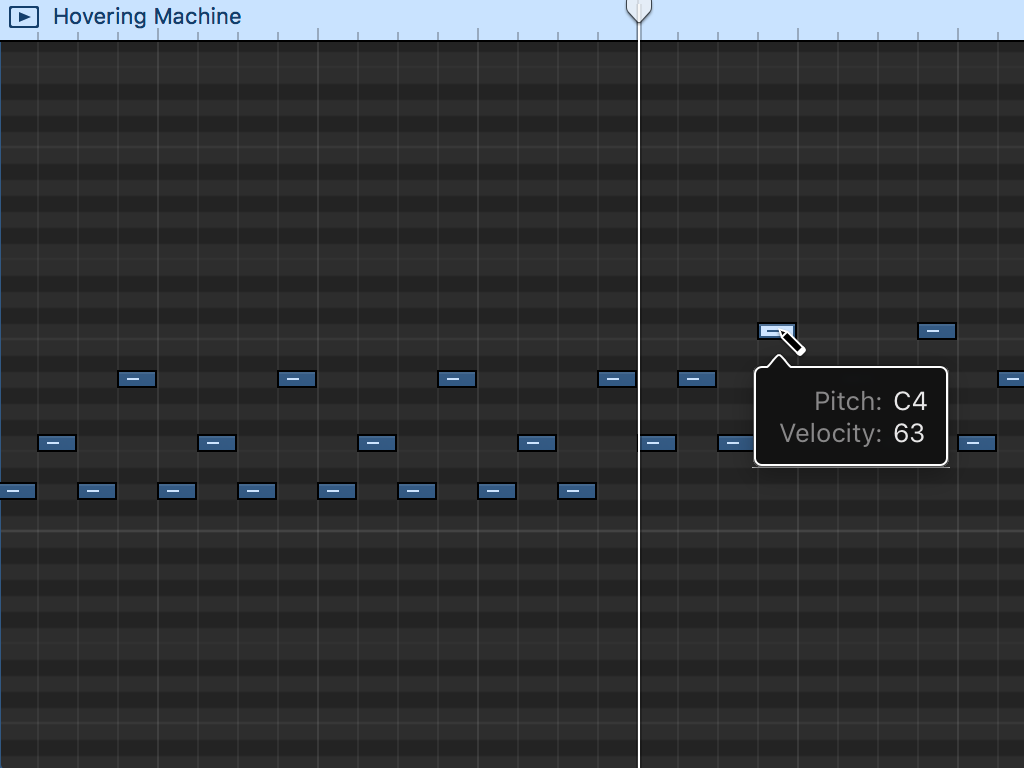

You can adjust that tempo for the entire tune by entering a different tempo when you first create the project or by clicking and dragging up or down on the tempo in GarageBand’s LCD.īut if you want the tempo to change over time you can do that as well by choosing Track > Show Tempo Track. By default, all new GarageBand tunes are configured to play at a speed of 120 beats per minute (BPM). Just as you can change a song’s pitch, you can also adjust its tempo (or speed). It’s just what happens when you make extreme pitch adjustments. This is not something to chide Apple over. You can somewhat safely move up or down by three or four increments, but beyond that the sound will venture into the territory of the unnatural.

Drag it to the left and it sounds like Darth Vadar is playing the track. Drag the slider too far to the right and the sound can get chipmunky. Note, however, that these tracks can sound funky (in a bad way) if you transpose them too much. You can change one of these track’s pitch by selecting it, exposing the edit pane, and dragging the Transpose slider up or down. Real instrument tracks, however, are more challenging.
#Garageband how to increase note volume software#
The software instrument tracks will adjust accordingly.Įasily alter your song’s pitch through the Transposition track. Click on the orange line that appears in this track where you’d like to change the tracks’ pitch and drag the line up or down.

Just choose Track > Show Transposition Track and a new track will appear at the top of the GarageBand window. Software instrument tracks can be moved up or down in pitch (called transposing) with ease. You’ve recorded all the instruments for your master work, you place your microphone in front of you with the idea of delivering the perfect vocal, you press Play and… holy smokes, that’s high! No worries (mostly). There’s a feature called quantization that can help with the second task. All you have to do is play the right notes, play them at the right time, and play them the right way. (Another feature called Flex Time allows you to change a real instrument track’s “feel” but it’s obscure enough that I’m not going to get into it.) You can, for example, split, trim, and rearrange them. You can also edit “real instrument” tracks (tracks where you record an instrument or microphone connected to your Mac). Just follows the dots to edit GarageBand’s software instruments. Just hold down the Command key and click in the grid where you’d like to place your notes. And if you’d like to add notes, you can do that as well. You might do this, for example, if the organ chord that ends your piece holds out longer than the other instruments. You can additionally change a note’s length by dragging on its right edge. You can move selected notes not only up and down to change their pitch (so correct that Eb you played instead of a D) but also change their timing by moving them to the left or right.

So, if you’ve recorded a piano track, click on a note pitched at Middle C and that’s exactly what will emerge from your Mac’s speakers or headphones. When you click on a dot, that note will sound using the instrument assigned to the track. The horizontal span of the grid represents time (and you can see that time divided into bars and beats at the top of the grid). The longer they are, the longer their duration. The higher the dots on the grid, the higher pitched the notes are. GarageBand is a music processor meaning that, like a word processor, you have the ability to correct your mistakes. Thankfully we’re no longer living in the days of tape where you either played every note and chord perfectly or relied on a very talented engineer with a box of razor blades. And while I expect that many of you have done so perfectly, there may be a person or two who has hit a clunker. I’ve shown you how to “play” GarageBand’s instruments with an external keyboard, onscreen keyboard, and even the Mac’s keyboard. Given that, I’d like to wrap up my look at the application by pointing out a few of its nuances that the majority of would-be GarageBand users will find helpful. Features that I find fascinating may appeal to only a few of you and I’d rather not tax your patience. As a writer/musician who’s spent a lot of time with GarageBand over the years, I must resist the temptation to explore its every nook and cranny simply because I’m enthusiastic about it.


 0 kommentar(er)
0 kommentar(er)
